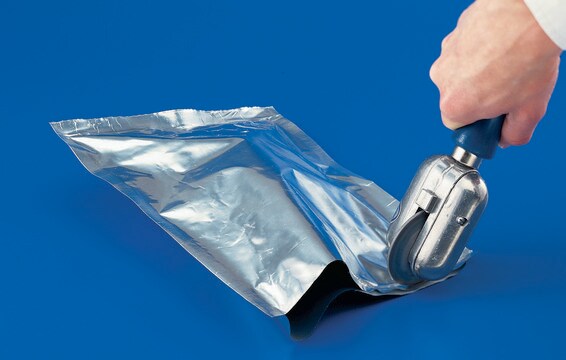W204218
Allyl sulfide
≥97%, FG
Synonym(s):
Thioallyl ether, 3,3′-Thiobis-1-propene, Diallyl sulfide, NSC 20947
About This Item
Recommended Products
biological source
synthetic
Quality Level
grade
FG
Fragrance grade
Halal
Kosher
Agency
follows IFRA guidelines
meets purity specifications of JECFA
reg. compliance
EU Regulation 1223/2009
EU Regulation 1334/2008 & 178/2002
FDA 21 CFR 117
FDA 21 CFR 172.515
vapor density
3.9 (vs air)
vapor pressure
7 mmHg ( 20 °C)
Assay
≥97%
refractive index
n20/D 1.490 (lit.)
bp
138 °C (lit.)
mp
−83 °C (lit.)
density
0.887 g/mL at 25 °C (lit.)
application(s)
flavors and fragrances
Documentation
see Safety & Documentation for available documents
food allergen
no known allergens
fragrance allergen
no known allergens
Organoleptic
garlic; horseradish; onion; sulfurous
SMILES string
C=CCSCC=C
InChI
1S/C6H10S/c1-3-5-7-6-4-2/h3-4H,1-2,5-6H2
InChI key
UBJVUCKUDDKUJF-UHFFFAOYSA-N
Looking for similar products? Visit Product Comparison Guide
General description
Application
- Diallylsulfide attenuates excessive collagen production and apoptosis in a rat model of bleomycin induced pulmonary fibrosis through the involvement of protease activated receptor-2.: The research highlights the protective effects of diallyl sulfide against pulmonary fibrosis, focusing on its ability to modulate protease activated receptor-2 and reduce collagen production (Kalayarasan et al., 2013).
Signal Word
Warning
Hazard Statements
Precautionary Statements
Hazard Classifications
Flam. Liq. 3
Storage Class Code
3 - Flammable liquids
WGK
WGK 2
Flash Point(F)
114.8 °F - closed cup
Flash Point(C)
46 °C - closed cup
Personal Protective Equipment
Regulatory Listings
Regulatory Listings are mainly provided for chemical products. Only limited information can be provided here for non-chemical products. No entry means none of the components are listed. It is the user’s obligation to ensure the safe and legal use of the product.
FSL
Group 4: Flammable liquids
Type 2 petroleums
Hazardous rank III
Water insoluble liquid
JAN Code
W204218-1KG:
W204218-4KG:
W204218-100G-K:4548173966342
W204218-4KG-K:4548173966366
W204218-100G:
W204218-SAMPLE:
W204218-VAR-K:
W204218-1KG-K:4548173966359
W204218-BULK-K:
W204218-SAMPLE-K:
Choose from one of the most recent versions:
Already Own This Product?
Find documentation for the products that you have recently purchased in the Document Library.
Customers Also Viewed
Our team of scientists has experience in all areas of research including Life Science, Material Science, Chemical Synthesis, Chromatography, Analytical and many others.
Contact Technical Service







